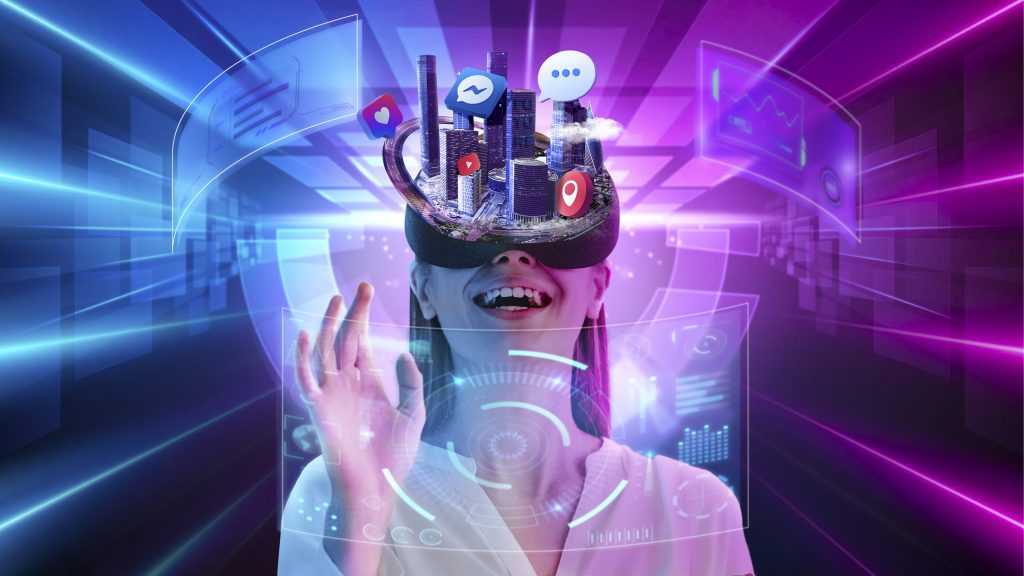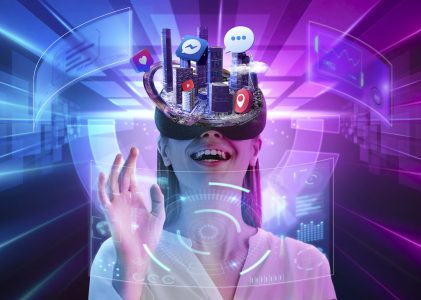
As instructional designers, we’re not just creators of content; it sounds a bit grand, but we’re architects of transformative learning experiences. At least, that’s the plan!
But the trouble is, to thrive in this ever-evolving field, we need to move with the times and adapt with technology. It becomes not just a skill—but a mindset. You have to be keen to try all sorts of new technologies to really enhance your training. I’m not saying jump on every new and shiny bandwagon that comes along, but some of the tech that’s around and looks like it’s here to stay can be brilliant for your content.
In this article, I’ll delve into why I think staying abreast of the latest educational technologies is paramount. And take a look at how virtual reality (VR), augmented reality (AR), and artificial intelligence (AI) can be harnessed to enhance the learning experience.
Why Adaptability with Technology Matters:
1. Changing Educational Landscape:
The educational landscape is undergoing a paradigm shift (as with most industries), with technology playing a central role in shaping the way we learn. Instructional designers must adapt to these changes to create relevant and effective learning experiences.
2. Engagement and Accessibility:
Integrating technology enhances engagement and accessibility. Interactive elements, multimedia, and adaptive learning platforms cater to diverse learning styles, making education more inclusive and effective (I mention how important inclusivity is here.).
3. Preparation for the Future:
Embracing educational technologies prepares instructional designers for the future. As technology continues to advance, those who adapt and innovate will be at the forefront of reshaping how knowledge is disseminated.
Staying Abreast of Educational Technologies:
1. Continuous Learning:
Set aside time to commit to continuous learning. You could follow educational technology blogs, participate in webinars, and enroll in online courses to stay informed about the latest trends and tools.
2. Professional Development:
There’s also an opportunity to attend conferences and workshops focused on educational technology. These events provide opportunities to network, learn from experts, and gain hands-on experience with emerging tools.
3. Networking with Peers:
Connect with other instructional designers and educators to exchange insights and experiences. Online forums, social media groups, and professional organizations are excellent platforms for networking and staying updated.
Exploring Virtual Reality, Augmented Reality, and AI in Instructional Design:
1. Virtual Reality (VR):
VR immerses learners in simulated environments, providing an unparalleled level of engagement. Instructional designers can leverage VR to create realistic scenarios, virtual field trips, and hands-on simulations that enhance experiential learning. You have to use (and learn) specific VR software, like Unity3D or A-Frame. But as more clients start requesting this type of option for their elearning, the more it will become as popular as Captivate and Storyline are now.
2. Augmented Reality (AR):
AR overlays digital content onto the real world, blending the physical and virtual. In instructional design, AR can be used to provide additional information, interactive elements, or real-time feedback, enriching the learning experience.
AR.js and Unity3D (which has an AR platform called Vuforia) are a couple of the platforms that you could use for this type of experience.
3. Artificial Intelligence (AI):
AI seems to be everywhere at the moment. ChatGPT is referenced by anybody and everybody wherever I am lately, it seems. As a tool though, it can be really useful – AI offers personalised learning experiences by analysing data and adapting content based on individual progress. Chatbots powered by AI can provide instant support, and machine learning algorithms can identify patterns in learner behaviour, informing instructional design decisions.
Practical Applications:
1. Virtual Campus/Office Tours:
You could use VR to offer virtual campus or office tours, allowing prospective students or employees to explore facilities and get a feel for the campus or work environment before making decisions.
2. AR-enhanced Textbooks:
It’s possible to integrate AR into textbooks to provide supplementary content, interactive exercises, or multimedia explanations. This approach adds a dynamic layer to traditional learning materials.
3. AI-driven Personalisation:
You could use AI to personalise learning paths based on individual strengths and weaknesses. Adaptive learning platforms can adjust content in real-time to meet the unique needs of each learner. What a teacher can do for one or two students at a time, the software can do simultaneously for a whole class.
Plan for the Future with AI, Augmented and Virtual Reality
As instructional designers, embracing adaptability with technology is not just about keeping pace; it’s about keeping education current and purpose built for the future. By staying informed, continuously learning, and exploring the potential of VR, AR, and AI, instructional designers can craft learning experiences that fly high above more traditional boundaries.
The journey toward innovative education begins with a commitment to adaptability—embracing the ever-expanding possibilities that technology brings to the realm of learning. How exciting to be at the forefront of instructional design. Let me know if you’ve ever tried any of these in your elearning and how it worked out.

